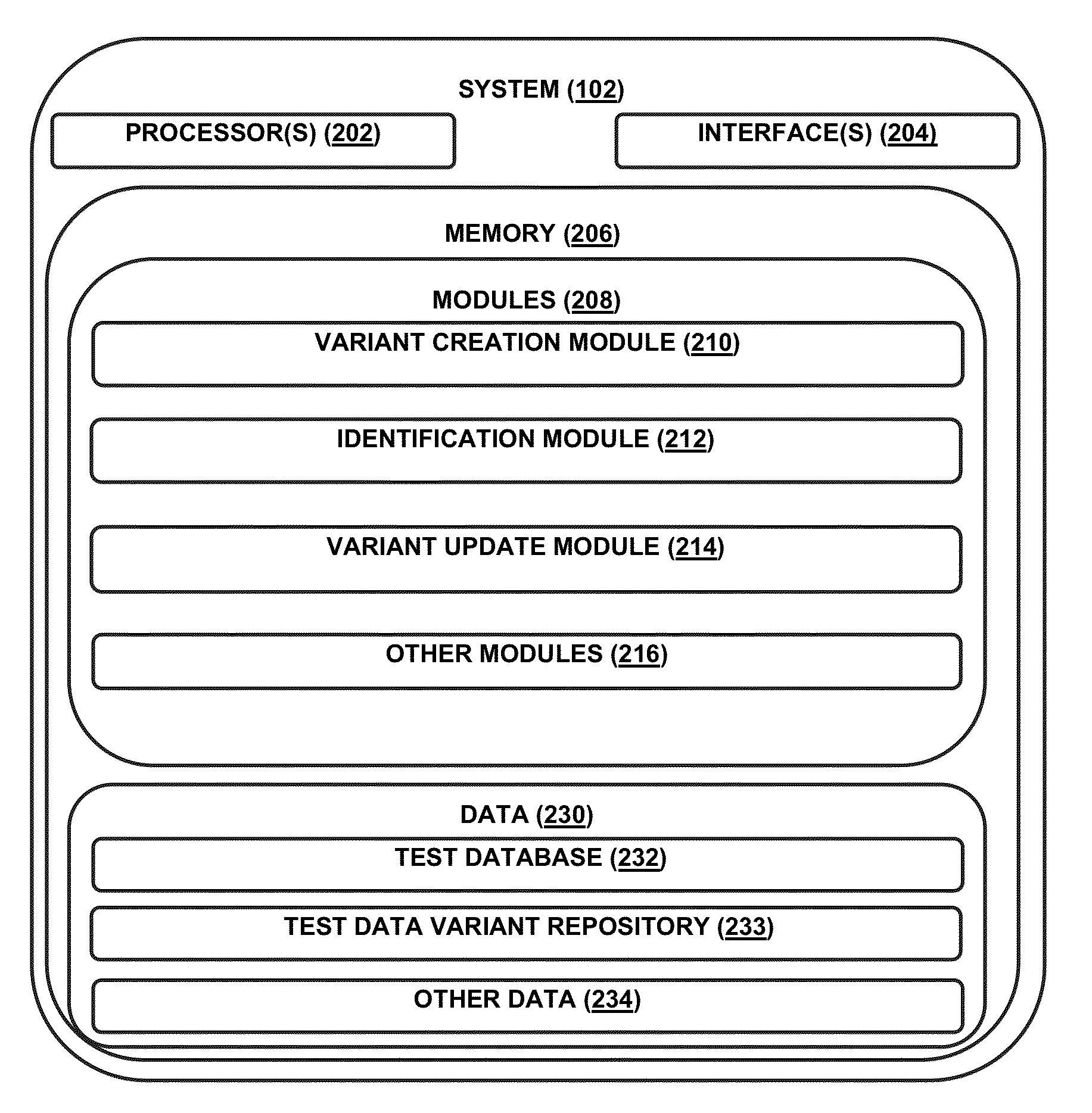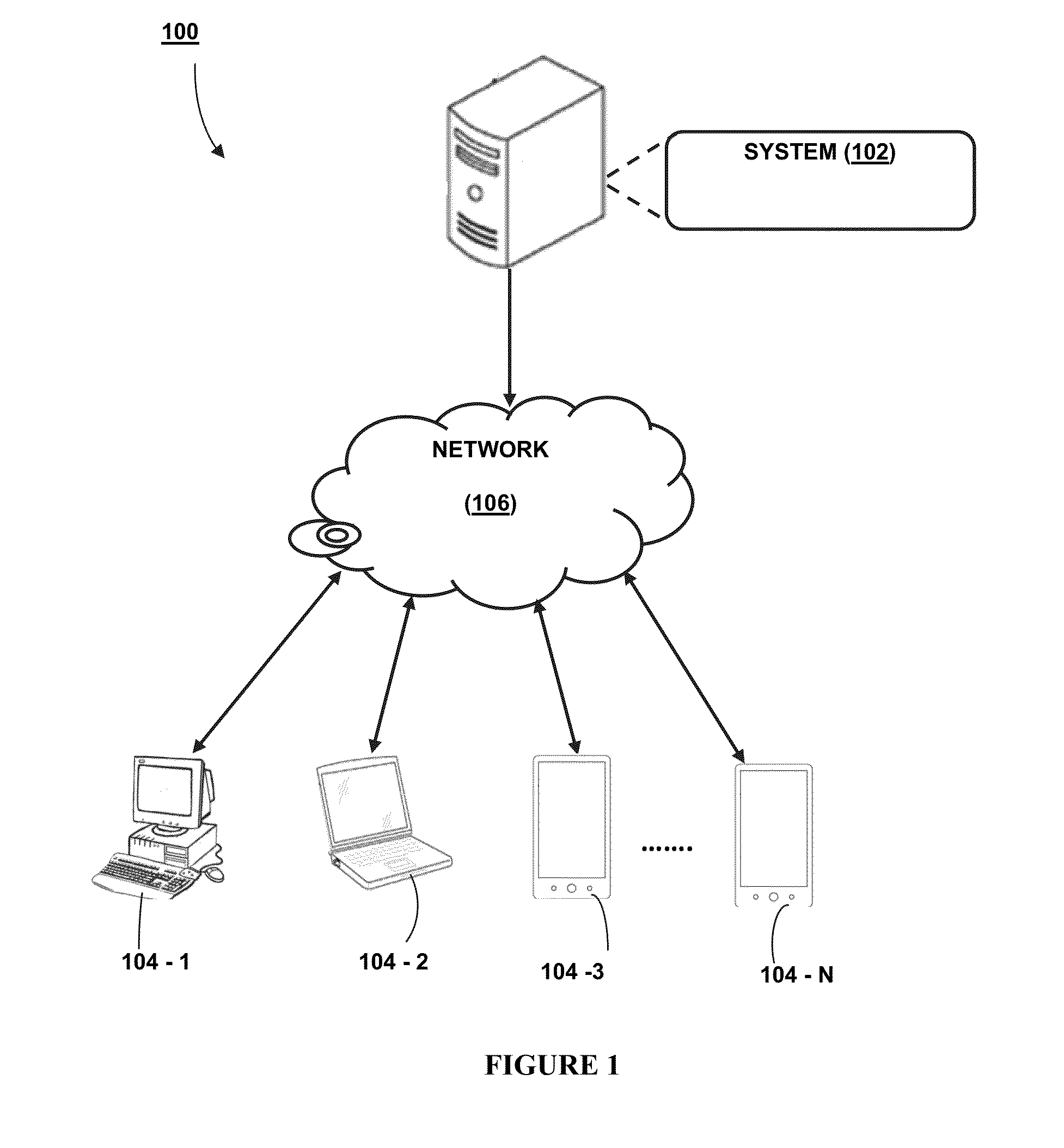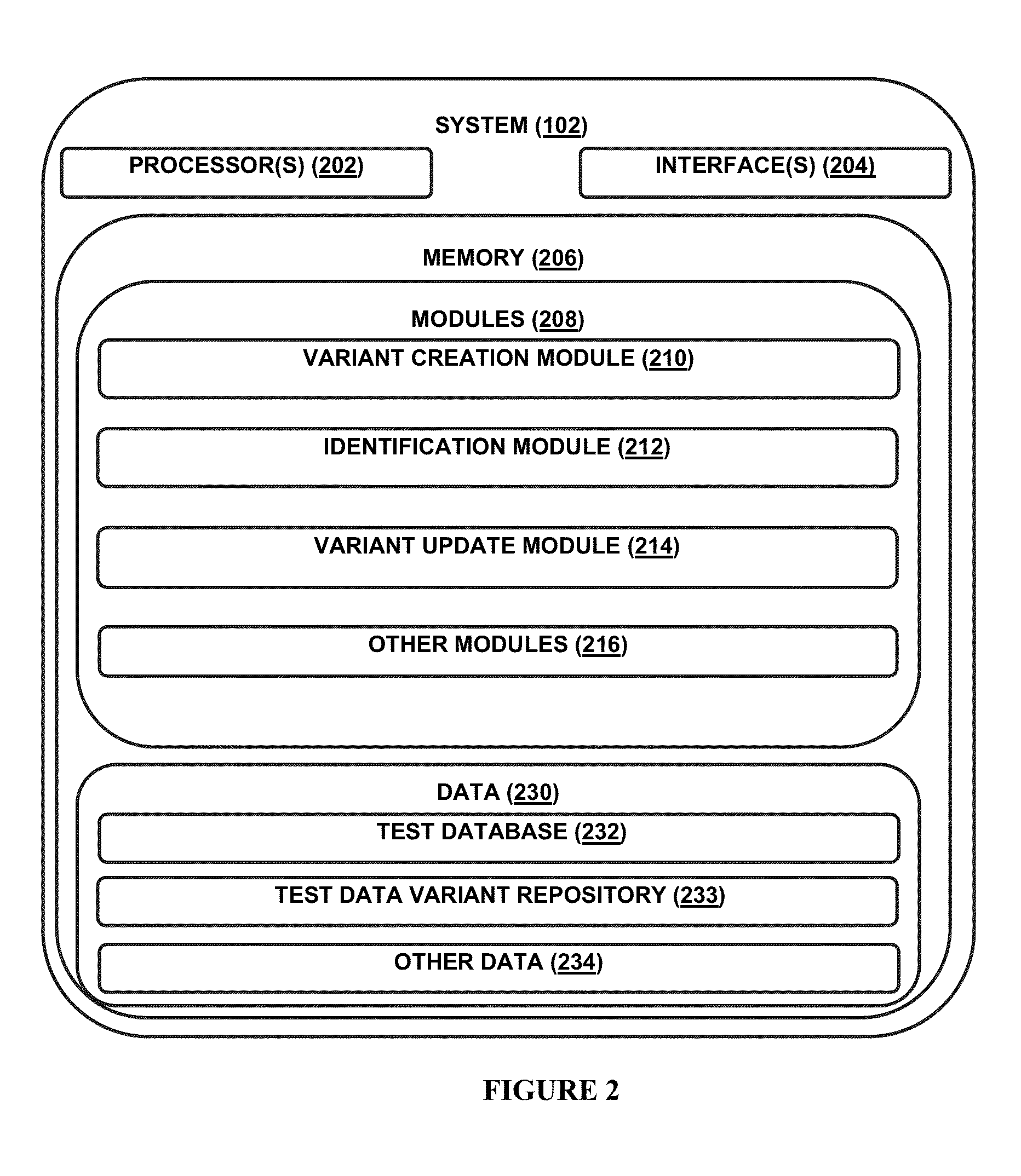System and method for creating variants in a test database during various test stages
a test database and database technology, applied in the field of test data variants, can solve problems such as possible errors, testers may find problems in the modified data in the database, and failure of the test case execution,
- Summary
- Abstract
- Description
- Claims
- Application Information
AI Technical Summary
Benefits of technology
Problems solved by technology
Method used
Image
Examples
Embodiment Construction
[0020]Systems and methods for creating one or more variants of test data are described. The primary test data variant (referred to as the “primary variant” or the “baseline variant”) is created by a user and the primary test data variant is stored as a baseline of the test data in a test data variant repository. The baseline is stored the first time the test data is created in the test database. The primary variant is stored as variant 1.0 of the test data. Then, the application is executed against the test database. Any changes made to the test database during the execution of the application are considered a variant change in the test database. The user analyzes the changes performed in the test database and requests for storing new variants in the test data variant repository. The changes are stored in the variants with names such as variant 1.1 and so on. Further, any subsequent change to the test database can be stored to the test data variant repository by the tester by changi...
PUM
 Login to View More
Login to View More Abstract
Description
Claims
Application Information
 Login to View More
Login to View More - R&D
- Intellectual Property
- Life Sciences
- Materials
- Tech Scout
- Unparalleled Data Quality
- Higher Quality Content
- 60% Fewer Hallucinations
Browse by: Latest US Patents, China's latest patents, Technical Efficacy Thesaurus, Application Domain, Technology Topic, Popular Technical Reports.
© 2025 PatSnap. All rights reserved.Legal|Privacy policy|Modern Slavery Act Transparency Statement|Sitemap|About US| Contact US: help@patsnap.com



